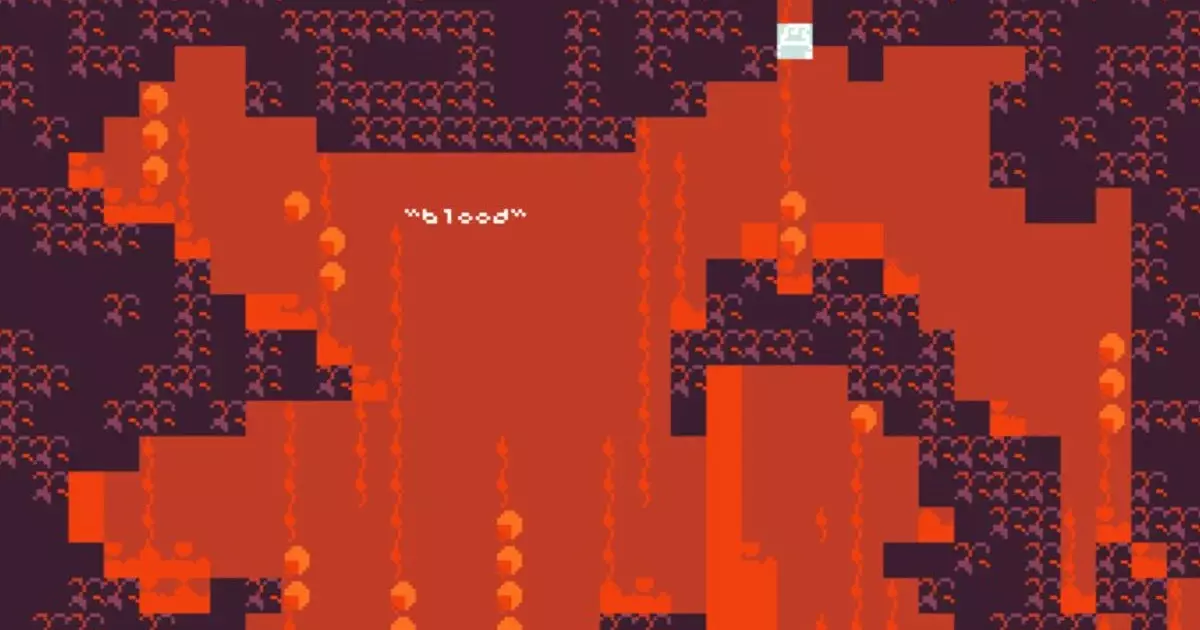Video games often invoke expectations around gameplay—a term that can invoke collective memories of action-packed sequences, intricate mechanics, and immersive narratives. However, the latest offering from the eccentric mind of Droqen, aptly titled The End Of Gameplay, diverges sharply from convention. It challenges players to embrace the concept of “killing gameplay” itself, inviting an exploration that hints at deeper existential and artistic themes. The essence of the game transcends mechanics; it embodies an ethos questioning what it means to ‘play’ and how deeply embedded structures can be challenged or even dismantled.
With The End Of Gameplay, Droqen seeks to provoke thought rather than simply entertain. The creator articulates a vision that encompasses not just play as a mundane activity but as an experience with emotional and philosophical undercurrents. By appealing to players who enjoyed the confounding nature of his previous work, Starseed Pilgrim, Droqen taps into a niche audience ready for confronting the more obscure aspects of gaming. Players yearning for art-meets-introspection will likely find themselves captivated by Droqen’s unique style, even if they struggle to decipher the meaning.
Breaking the Conventional Mold
For those unfamiliar with Droqen’s previous work, Starseed Pilgrim was a block-building adventure that rewarded exploration and experimentation over traditional objectives. Its esoteric nature left many players puzzled yet somehow attracted to its unique charm. This new title appears to amplify that mystique: Droqen mentions creating a game that strips away the elements traditionally deemed essential. If Starseed Pilgrim was an experiment in ambiguity, The End Of Gameplay seems poised to dive headfirst into abstraction.
Droqen’s metaphoric “blood of its ending” references serve to intensify the intrigue surrounding the project’s ambition. The metaphorical gesture of killing gameplay suggests that it could evoke a sense of horror or existential angst buried within the gaming paradigm. The notion of gameplay being ‘killed’ also pushes players to reconcile how they interact with games, challenging them to reflect on their expectations and desires in a medium often characterized by player agency and control.
Reimagining the Anthology Concept
The End Of Gameplay echoes recent trends in indie gaming, which have increasingly seen creators compile short, experimental works into cohesive projects. This anthology format, as observed in works by Terry Cavanagh and UFO 50, provides a vehicle for exploring varied gameplay experiences, emphasizing unique narratives that defy conventional storylines. Such structures lend themselves well to Droqen’s artistic vision, allowing diverse expressions of the theme—a poetic exploration of what ‘game’ truly means in an interactive medium.
It’s a profound observation on how digital experiences can be redefined when purposefully shunning traditional definitions. Could Droqen’s venture pave the way for a new genre that merges poetic expression with playful exploration? A space where enjoyment isn’t quantifiable or defined by a rigid understanding of success but is instead shaped by subjective expression and individual interpretation.
The Challenge Ahead
Droqen’s commitment to remaining under the radar, voicing a desire to release the game to “as few people as possible,” hints at the fragility of such experimental endeavors. However, the inevitable exposure that comes with any noteworthy project can stir curiosity. The saturation of indie games may swell the discourse surrounding The End Of Gameplay, escalating the stakes for what it means to be heard and valued in the crowded gaming landscape.
In a sense, the game is not just a title but a radical manifesto, advocating for a thorough examination of the conventions that govern not only gaming but artistic expression itself. The term ‘gameplay’ may often come off as a clichéd filler in discussions about video games, yet Droqen’s approach could guide an exciting discourse on redefining terms, roles, and interpretations inherent in interactive arts.
As we await its release on the luminous full flower moon in May, it’s exhilarating to think about the potential conversations that will emerge. The End Of Gameplay beckons us into its intriguing wilderness—providing players a canvas to explore their own thoughts, instincts, and feelings about gaming. The question arises, can we willingly sever the ties that define what we expect from our gaming experiences to embrace a form that is as subjective and multifaceted as our own human experiences?

